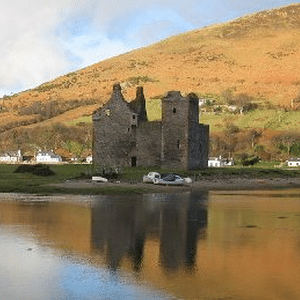Thank you to Lynn McAlister for sharing her blog with us: Today in MacAlister History.
About the Blog:
The Scottish (& Irish) MacAlister clan has participated in historical events great and small since they originated as a branch of the Clan Donald in the 13th century. As as a relatively small clan, however, they have often been overlooked by historians. This blog attempts to remedy that by drawing attention to the parts played by members of this clan in history over the centuries and throughout the world.
An Excerpt from a Recent Post: The Askomil Incident
As for Godfrey, although he was probably the instigator, his role in the Askomil incident appears to have been overlooked. The transcripts of Sir James’s trial clearly state that Godfrey had murdered his tutor, but he was evidently never prosecuted for either of these crimes. Later histories often fail to mention the Loup connection at all. From the government’s perspective, it probably made more sense to go after James. The West Highlands were still outwith anything approaching royal control, and Sir James was de facto chieftain of one of the most powerful sects of the Clan Donald – a clan whose very existence seemed to spark insurrections. It may be that the government looked on Askomil as an opportunity to finally bring down the Macdonalds of Dunyvaig. Clan Alasdair, on the other hand, could be allowed the occasional murder or house-burning. They were simply not as dangerous… Read more.
You can also find the One-Name Study for MacAlister on the Guild of One-Name Studies website.
Image: Lochranza Castle, Isle of Arran (Ranald MacAlester was keeper of this castle c. 1460) See the full image on Today in MacAlister History
